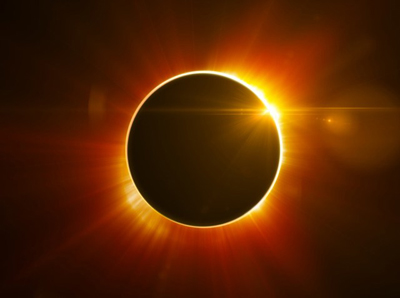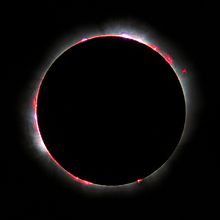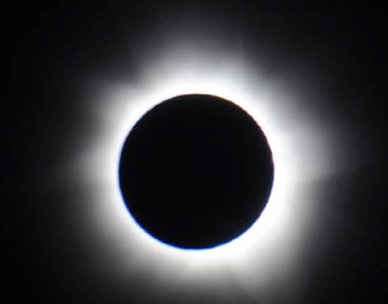From Thanksgiving to Christmas Day, the sounds of Christmas music are everywhere: stores, TV specials, many radio stations. Every year, the biggest oldies station in Dallas becomes “The Christmas Station,” this year starting in mid-November.
There are two ways to respond to Christmas music, I think. One way is to let it stream unfiltered into our hearts and minds as the background noise of our December lives. The other is to be intentional about categorizing what we hear, letting it all remind us of “the reason for the season.”
I suggest that Christmas music falls into four categories, and we can mentally tag each song with the appropriate category as we listen:
Songs About Weather
What do sleigh rides have to do with Jesus’ birthday? Nothing. But a number of songs we only hear in December are focused on northern-hemisphere weather. Key words are snow, cold, frosty, winter, and jingle bells (because they belong on sleighs, apparently).
Songs About Fantasy
All songs about Santa Claus, the Grinch, elves, and Frosty the Snowman belong in this category. Make-believe characters have nothing to do with the birth of the Savior, but we only hear them at Christmas.
Songs About “Xmas Feelings”
There are lots of songs invoking warm and fuzzy feelings about Christmas, and being together, and good cheer. It’s “the hap-happiest season of all,” right? Other songs highlight what the singer wants for Christmas, ranging from a kid’s two front teeth to the not-TOO-greedy “Santa Baby” song: a fur coat, a car, a yacht and a ring. Be sure to hang some mistletoe so you can score a kiss from somebody. (Except that given the current movement to expose sexual harassment and crimes, that might not be the best move right now.) I call these “Xmas Feelings” because although the songs are played at Christmastime, none of them have anything to do with the reason we celebrate Christmas in the first place. It’s a totally secular feel-good holiday, so we can just X out the Christ of Christmas.
Songs About the Birth of Christ
Aaaah . . . now we’re talking! Most songs about Jesus’ birth are either Christmas carols, long venerated for the very good reason that they proclaim truth. We call them carols, but they’re really hymns that celebrate the Incarnation, God leaving heaven to become man. Most carols show deep insight into the glorious mystery of the Incarnation. “Hark the Herald Angels Sing” proclaims, “Veiled in flesh the Godhead see, Hail the incarnate Deity.” My favorite Christmas carol, “Joy to the World,” exhorts us—and the whole world—to embrace the Savior: “Let earth receive her King, Let every heart prepare Him room, And heaven and nature sing. . .”
In addition to Christmas carols, some more modern songs teach biblical doctrine. “Mary Did You Know,” written by Mark Lowry and Buddy Greene in 1991, elevates Jesus in a most worshipful way. “Mary did you know . . . when you kiss your little Baby you kiss the face of God? . . . This sleeping Child you’re holding is the Great I AM?” Still gives me goosebumps. Every time I hear it.
The continual presence of Christmas music is a good opportunity to practice discernment with every song by asking, “Which category does this song go in?” Using biblical wisdom to think intentionally is one way we can love God with our minds, as Jesus said is part of the greatest commandment (Luke 10:27). But then we can go on to a second step, which is to connect the dots between the songs and the Lord behind “the reason for the season.”
When we hear a song about weather: “Lord, I praise You for being the creator of winter—and spring, summer and fall.”
When we hear a song about fantasy characters: “Lord, I praise You for being real and true, and not make-believe like Santa or Frosty.”
When we hear a song about Xmas feelings: “Lord, the longings of the heart for love and for home and for belonging are all met in You. Thank You for drawing me into relationship with You as the giver of these good things.”
When we hear a song about Jesus’ birth: “Lord, Happy Birthday! Thank You for leaving heaven and coming to earth to reconcile us with the Father. Thank You for this wonderful song that reminds us that You are Lord.”
Bonus points for identifying “category error” songs that mix fantasy and truth. Examples: “Here Comes Santa Claus” mixes the made-up Santa and the True God:
“Peace on earth will come to all, if we just follow the light
So let’s give thanks to the Lord above ’cause Santa Claus comes tonight.”
Then there’s “Up on the Rooftop”:
Up on the rooftop
Click, click, click
Down through the chimney with
Good Saint Nick
Santa is not Saint Nicholas, a 4th-century Christ-follower in modern-day Turkey. St. Nicholas didn’t come down chimneys with toys for good little girls and boys! Santa is fantasy; “St. Nick” is real.
Happy singing . . . and thinking!
This blog post originally appeared at
blogs.bible.org/engage/sue_bohlin/loving_god_through_xmas_music
on December 12, 2017.
 “The heavens declare the glory of God,” Psalm 19 tells us. On August 21, 2017, millions of Americans will have an incredible opportunity to see His heavenly glory in a way most of us never have: through a total solar eclipse. On a path running from Oregon to South Carolina, observers on the ground will see the moon slip in front of the sun, blocking out all its light and dropping the temperature drastically (about 10 to 15 degrees Fahrenheit) and suddenly.
“The heavens declare the glory of God,” Psalm 19 tells us. On August 21, 2017, millions of Americans will have an incredible opportunity to see His heavenly glory in a way most of us never have: through a total solar eclipse. On a path running from Oregon to South Carolina, observers on the ground will see the moon slip in front of the sun, blocking out all its light and dropping the temperature drastically (about 10 to 15 degrees Fahrenheit) and suddenly. During an eclipse, the heavens declare the glory of God by allowing us to see things about the sun we wouldn’t be able to observe any other way, beautiful and gloriously resplendent. Just before totality we can see “Baily’s Beads.” Only seen during an eclipse, bright “beads” appear at the edge of the moon where the sun is shining through lunar valleys, a feature of the moon’s rugged landscape. This is followed by the “diamond ring” effect, where the brightness of the sun radiates as a thin band around the circumference of the moon, and the last moments of the sun’s visibility explode like a diamond made of pure light. After the minutes of totality, the diamond ring effect appears again on the opposite side of the moon as the first rays of the sun flare brilliantly. These sky-jewelry phenomena are so outside of mankind’s control that witnessing them stirs our spirits (even on YouTube!) with the truth of Romans 1:20—”God’s invisible qualities—his eternal power and divine nature—have been clearly seen, being understood from what has been made, so that people are without excuse.”
During an eclipse, the heavens declare the glory of God by allowing us to see things about the sun we wouldn’t be able to observe any other way, beautiful and gloriously resplendent. Just before totality we can see “Baily’s Beads.” Only seen during an eclipse, bright “beads” appear at the edge of the moon where the sun is shining through lunar valleys, a feature of the moon’s rugged landscape. This is followed by the “diamond ring” effect, where the brightness of the sun radiates as a thin band around the circumference of the moon, and the last moments of the sun’s visibility explode like a diamond made of pure light. After the minutes of totality, the diamond ring effect appears again on the opposite side of the moon as the first rays of the sun flare brilliantly. These sky-jewelry phenomena are so outside of mankind’s control that witnessing them stirs our spirits (even on YouTube!) with the truth of Romans 1:20—”God’s invisible qualities—his eternal power and divine nature—have been clearly seen, being understood from what has been made, so that people are without excuse.” A total solar eclipse offers so much more, though, than Baily’s Beads and the Diamond Ring. At the moment of totality, the pinkish arc of the sun’s chromosphere (the part of the sun’s atmosphere just above the surface) suddenly “turns on” as if an unseen hand flips a switch. I knew God is very fond of pink because of how He paints glorious sunrises and sunsets in Earth’s skies, but those fortunate enough to see a total eclipse can see how He radiates pinkness from the sun itself! The heavens declare the glory of God!
A total solar eclipse offers so much more, though, than Baily’s Beads and the Diamond Ring. At the moment of totality, the pinkish arc of the sun’s chromosphere (the part of the sun’s atmosphere just above the surface) suddenly “turns on” as if an unseen hand flips a switch. I knew God is very fond of pink because of how He paints glorious sunrises and sunsets in Earth’s skies, but those fortunate enough to see a total eclipse can see how He radiates pinkness from the sun itself! The heavens declare the glory of God! For the few minutes of totality, the naked eye can see the sun’s lovely corona (Latin for crown) streaming out from the sun. We can’t see the corona except during an eclipse because looking straight at the sun for even a few seconds causes eye damage, and because the sun’s ball of fire overwhelms the (visually) fragile corona. This is another way that an eclipse allows us to see how the heavens declare the glory of God.
For the few minutes of totality, the naked eye can see the sun’s lovely corona (Latin for crown) streaming out from the sun. We can’t see the corona except during an eclipse because looking straight at the sun for even a few seconds causes eye damage, and because the sun’s ball of fire overwhelms the (visually) fragile corona. This is another way that an eclipse allows us to see how the heavens declare the glory of God. But then I was able to speak briefly about what we have in common, a situational loss of freedom. I have lost the ability—the freedom—to walk, and they have temporarily lost the ability—the freedom—to walk out of lockup. Still, even while imprisoned by our situations, Jesus offers true freedom that has nothing to do with our circumstances. He promised to His disciples, “You will know the truth, and the truth will set you free.” He even said, “If the Son sets you free, you will be free indeed.” (John 8:32, 36)
But then I was able to speak briefly about what we have in common, a situational loss of freedom. I have lost the ability—the freedom—to walk, and they have temporarily lost the ability—the freedom—to walk out of lockup. Still, even while imprisoned by our situations, Jesus offers true freedom that has nothing to do with our circumstances. He promised to His disciples, “You will know the truth, and the truth will set you free.” He even said, “If the Son sets you free, you will be free indeed.” (John 8:32, 36) • As we look at our present, Jesus can set us free from the “tapes” of lies and misbeliefs that control our lives, as we replace the lies with His truths. For example, a number of the ladies at the retreat had lived in bondage to the lie that they had to be perfect in order to be acceptable. The weight of needing to be perfect is soul-killing because it’s impossible for imperfect people to be perfect! But we can be set free by embracing the truth that only God is perfect, so we can let go of the unrealistic expectation that we can ever live perfectly this side of heaven. God knows we will stumble, and He has promised to hold our hand when we do. And beyond that, He understands our longing for perfection is actually a longing for the perfect home of Eden, which we will get to experience on the New Earth we read about in the book of Revelation.
• As we look at our present, Jesus can set us free from the “tapes” of lies and misbeliefs that control our lives, as we replace the lies with His truths. For example, a number of the ladies at the retreat had lived in bondage to the lie that they had to be perfect in order to be acceptable. The weight of needing to be perfect is soul-killing because it’s impossible for imperfect people to be perfect! But we can be set free by embracing the truth that only God is perfect, so we can let go of the unrealistic expectation that we can ever live perfectly this side of heaven. God knows we will stumble, and He has promised to hold our hand when we do. And beyond that, He understands our longing for perfection is actually a longing for the perfect home of Eden, which we will get to experience on the New Earth we read about in the book of Revelation. • One of my dear friends discovered, in the process of working through the challenges of parenting a prodigal adult child, that there is freedom in owning 100% of our own part and 0% of other people’s choices and behaviors. There’s no point in taking on guilt or responsibility for someone else’s choices; they are completely responsible for their part.
• One of my dear friends discovered, in the process of working through the challenges of parenting a prodigal adult child, that there is freedom in owning 100% of our own part and 0% of other people’s choices and behaviors. There’s no point in taking on guilt or responsibility for someone else’s choices; they are completely responsible for their part. We are in the midst of a major remodeling project in our home as it is made wheelchair-friendly. Doors are being widened, our closet is being reconfigured so I can reach my hanging clothes, and our bathroom’s tub and step-in shower are being replaced by a roll-in shower.
We are in the midst of a major remodeling project in our home as it is made wheelchair-friendly. Doors are being widened, our closet is being reconfigured so I can reach my hanging clothes, and our bathroom’s tub and step-in shower are being replaced by a roll-in shower.